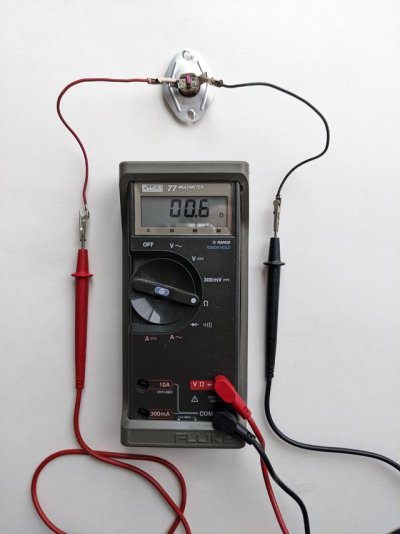Qs Laptop
Thinks s/he gets paid by the post
- Joined
- Mar 11, 2018
- Messages
- 3,554
I want to run this past the brain trust here on ER.ORG. The breadth of knowledge here is a real resource.
I reprogrammed my thermostat last night to have the heat taper off 50 minutes sooner than usual and also set the temperature one degree lower, down to 64 degrees for night time sleeping. We're not staying up much past 11:00 o'clock anymore so there was no need to have the heat setting at 72 degrees up until 10:30 at night anymore.
So this morning I wake up and I notice it's cold in the house. Immediately I'm thinking--is something wrong with the thermostat? After all, I tinkered with it the night before and who knows if it engaged the furnace overnight, as I had been sleeping. The thermostat is in the "Heat On" mode and the temperature readout is 64 degrees. I notice the blower motor on the furnace is running but the air coming out of the vents is not warm.
I look at the furnace diagnostic code light. Carrier Weathermaker 9300 furnace is throwing a code 33.
According to the sticker inside my furnace access door a code 33 means a limit circuit fault caused by:
Dirty and/or clogged air filter. No--I replaced my air filter on less than 3 weeks ago. Air filter is a larger Aprilaire filter and not the common 1" thick fiberglass strand type filter.
Blocked vents or air returns. No.
Loose blower wheel. No
Defective blower wheel. No
Inadequate combustion air supply. Flame Rollout switch is open. Possibility.
Excessive wind. Hmmm...
Another possibility was the limit switch was defective but that wasn't mentioned as being a part of code 33 so I didn't test it.
I reset the flame rollout switch by pressing a button on the backside of the switch. I turn the thermostat back on and observe the furnace operation. I get the flames to ignite, they are shooting directly into the tubes as normal and my furnace is running normally.
So what the heck happened? Was there high winds last night that prevented the intake pipe from drawing combustion air, thus tripping the flame rollout switch? I checked the weather and there might have been wind gusts to 25 mph last night, nothing that we haven't had before and nothing that has turned off the furnace before.
Intermittent flame rollout switch? Could be. I'll be monitoring the furnace over the next day or so.
The weird thing is that I adjusted the thermostat last night, the first time I've done that since setting the programming to "winter" mode back in November. I keep thinking that had to have something to do with it, but what?
I reprogrammed my thermostat last night to have the heat taper off 50 minutes sooner than usual and also set the temperature one degree lower, down to 64 degrees for night time sleeping. We're not staying up much past 11:00 o'clock anymore so there was no need to have the heat setting at 72 degrees up until 10:30 at night anymore.
So this morning I wake up and I notice it's cold in the house. Immediately I'm thinking--is something wrong with the thermostat? After all, I tinkered with it the night before and who knows if it engaged the furnace overnight, as I had been sleeping. The thermostat is in the "Heat On" mode and the temperature readout is 64 degrees. I notice the blower motor on the furnace is running but the air coming out of the vents is not warm.
I look at the furnace diagnostic code light. Carrier Weathermaker 9300 furnace is throwing a code 33.
According to the sticker inside my furnace access door a code 33 means a limit circuit fault caused by:
Dirty and/or clogged air filter. No--I replaced my air filter on less than 3 weeks ago. Air filter is a larger Aprilaire filter and not the common 1" thick fiberglass strand type filter.
Blocked vents or air returns. No.
Loose blower wheel. No
Defective blower wheel. No
Inadequate combustion air supply. Flame Rollout switch is open. Possibility.
Excessive wind. Hmmm...
Another possibility was the limit switch was defective but that wasn't mentioned as being a part of code 33 so I didn't test it.
I reset the flame rollout switch by pressing a button on the backside of the switch. I turn the thermostat back on and observe the furnace operation. I get the flames to ignite, they are shooting directly into the tubes as normal and my furnace is running normally.
So what the heck happened? Was there high winds last night that prevented the intake pipe from drawing combustion air, thus tripping the flame rollout switch? I checked the weather and there might have been wind gusts to 25 mph last night, nothing that we haven't had before and nothing that has turned off the furnace before.
Intermittent flame rollout switch? Could be. I'll be monitoring the furnace over the next day or so.
The weird thing is that I adjusted the thermostat last night, the first time I've done that since setting the programming to "winter" mode back in November. I keep thinking that had to have something to do with it, but what?
Last edited:


